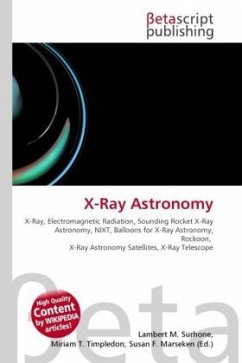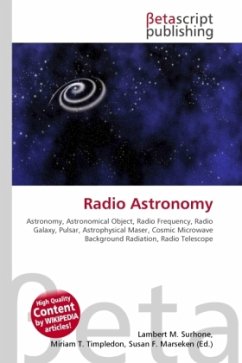
Solar X-ray Astronomy
Versandkostenfrei!
Versandfertig in 6-10 Tagen
30,99 €
inkl. MwSt.

PAYBACK Punkte
15 °P sammeln!
High Quality Content by WIKIPEDIA articles! Solar X-ray astronomy is a branch of X-ray astronomy which focuses on understanding the origin of X-ray emission from the Sun. Most of our current knowledge of the Sun comes from observing it in the visual portion of the electromagnetic spectrum. However, when observed with appropriate instruments in the X-radiation portion of this spectrum the Sun is almost a variable star, and at times almost a dark star. X-rays span 3 decades in wavelength, frequency and energy. From 10 to 0.1 nanometers they are classified as soft X-rays, and from 0.1 nm to 0.01 ...
High Quality Content by WIKIPEDIA articles! Solar X-ray astronomy is a branch of X-ray astronomy which focuses on understanding the origin of X-ray emission from the Sun. Most of our current knowledge of the Sun comes from observing it in the visual portion of the electromagnetic spectrum. However, when observed with appropriate instruments in the X-radiation portion of this spectrum the Sun is almost a variable star, and at times almost a dark star. X-rays span 3 decades in wavelength, frequency and energy. From 10 to 0.1 nanometers they are classified as soft X-rays, and from 0.1 nm to 0.01 nm as hard X-rays. In terms of temperature, 1 eV = 11,604 K. X-rays correspond to 1.39 x 106 to 1.39 x 109 K. The surface of the "visual Sun" has an effective temperature of ~5,780 K. Light is electromagnetic radiation, particularly radiation of a wavelength that is visible to the human ey. It covers about half an order of magnitude. In frequency this is ~790-400 THz, and in energy ~1.6-3.2 eV.












